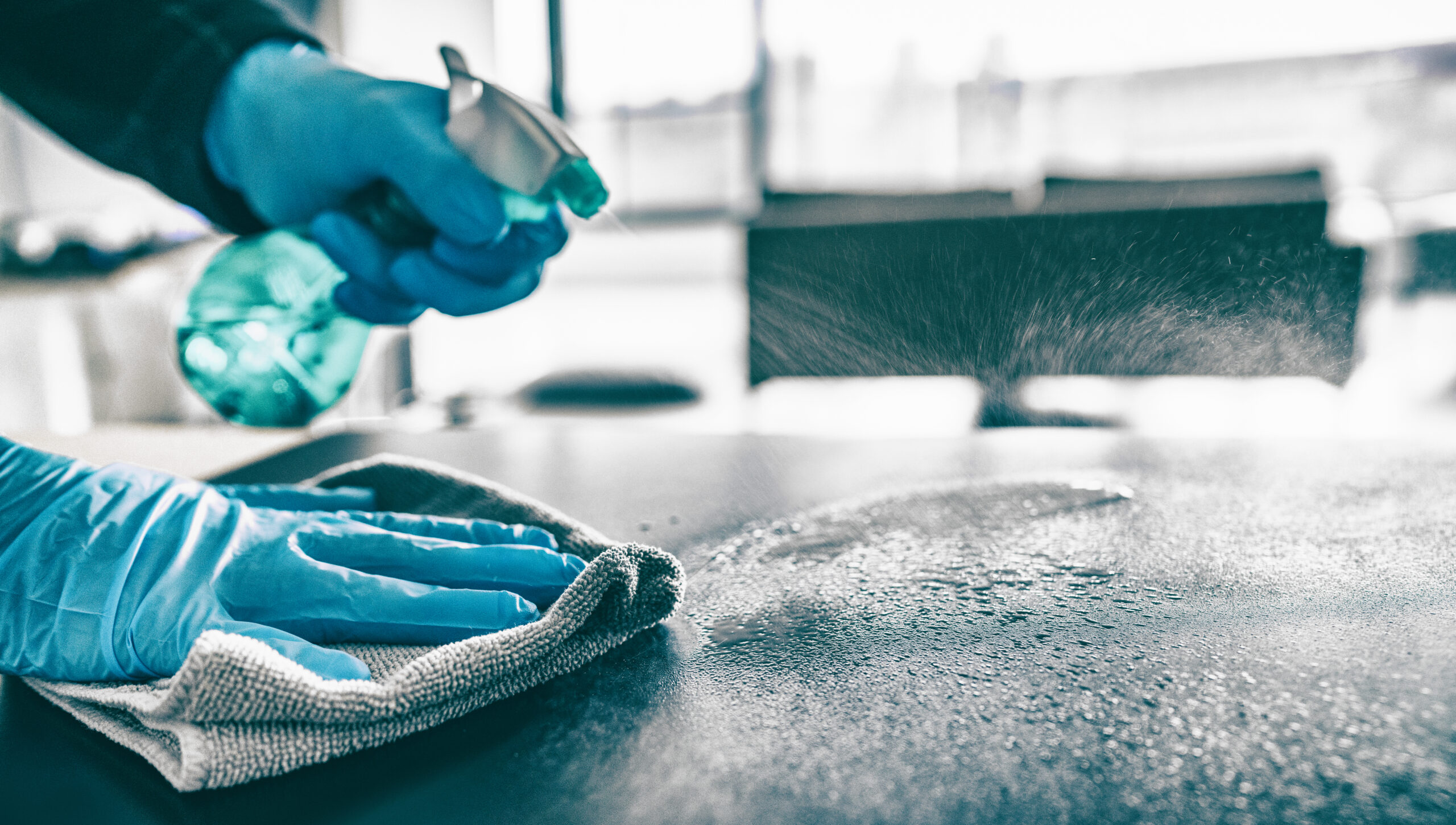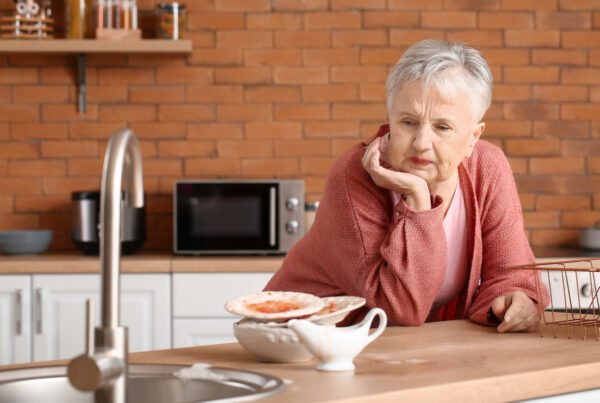The health, wellness, safety and overall care of residents in aged care facilities has always been of the utmost of importance, but the onset of COVID-19 has led to a distinctive elevation of the cleaning crew.

Aged care cleaners have always been important, but now everyone recognises it. Cleaners have never been so appreciated and are now finally getting the recognition they deserve and the resources they should always have had.
People in facilities are acknowledging the cleaning staff and understanding that they’re doing as difficult a task as what the care worker is, and as vital, if not more. And residents are appreciating the cleaners, which is positive for the workforce.
Examining the challenges and solutions of cleaning techniques and products within aged care facilities can help provide a safe and high-quality health system that offers ultimate care required and elevates the overall standard for people living in aged care facilities.
Cleaning – general procedures
Cleaning is important for infection control – particularly in work areas – because deposits of dust, soil and microbes on surfaces can transmit infection. Contaminated areas such as operating rooms or isolation rooms must be cleaned after each session, and spot cleaned after each case or thoroughly cleaned as necessary.
The following basic principles should be followed:
- Written cleaning protocols should be prepared, including methods and frequency of cleaning; protocols should include policies for the supply of all cleaning and disinfectant products
- Standard precautions (including wearing of personal protective equipment [PPE], as applicable) should be implemented when cleaning surfaces and facilities (see ‘Standard and additional precautions’)
- Cleaning methods should avoid generation of aerosols
- All cleaning items should be changed after each use and cleaned and dried before being used again. They should also be changed immediately following the cleaning of blood or body fluid/substance spills.
Single-use cleaning items are preferred, where possible, such as lint-free cleaning cloths
- Sprays should not be used, because they can become contaminated and are difficult to clean. Sprays are not effective, as they do not touch all parts of the surface to be cleaned
- Detergents should not be mixed with other chemicals
- All cleaning solutions should be prepared fresh before use.
Cleaning – specific procedures
Surface cleaning
Floors in aged care facilities should be cleaned daily or, as necessary, with a vacuum cleaner fitted with a particulate-retaining filter. The filter should be changed in accordance with the manufacturer’s instructions and the exhaust air should be directed away from the floor to avoid dust dispersal. A ducted vacuum cleaning system can also be used, as long as safe venting of the exhaust air is ensured.
Damp dusting using a lint-free cloth is essential. Brooms disperse dust and bacteria into the air and should not be used in patient or clinical areas. Dust-retaining mops, which are specially treated or manufactured to attract and retain dust particles, do not increase airborne counts as much as ordinary brooms and remove more dust from surfaces. However, brooms and dust-retaining mops should not be used in clinical areas where there is a high risk of infection associated with dust (for example, burns units).
The procedure for routine surface cleaning is as follows:
- All cleaning solutions should be prepared immediately before use.
- Work surfaces should be cleaned (wiped over) with a neutral detergent and warm water solution, rinsed and dried before and after each session, or when visibly soiled. Spills should be cleaned up as soon as practical.
- When a disinfectant is required for surface cleaning, the manufacturer’s recommendations for use, and workplace health and safety instructions should be followed.
- Buckets should be emptied after use, washed with detergent and warm water, rinsed in hot water and stored dry (turned upside down).
- Mops should be laundered or cleaned in detergent and warm water, rinsed in hot water, then stored dry.
- Mop heads should be detachable or stored with the mop head up.
Specialised areas
- Isolation and treatment rooms and ensuite bathrooms should be cleaned at least twice daily.
- Sterilising processing departments should be cleaned at least twice daily and when visibly soiled.
Wet areas
The following should be cleaned at least daily and more frequently as required:
- Toilets, sinks, washbasins, baths and shower cubicles
- All fittings attached to showers, baths and hand-basins
- Surrounding floor and wall areas.
Walls and fittings
- Walls and screens should be cleaned quarterly or if visibly soiled.
- Blinds and curtains should be cleaned quarterly or if visibly soiled.
- Carpets should be vacuumed daily, and other floor surfaces washed daily and when soiled.
- Bed and examination screens should be changed weekly and when visibly soiled.
Cleaning other infectious disease agents
Spills of blood or other body fluids and tissues should be cleaned using standard spills management procedures. PPE used when cleaning contaminated surfaces should be incinerated after use. Reusable eye protection should be cleaned as above.
Maintenance of cleaning equipment
Cleaning items (including solutions, water, buckets, cleaning cloths and mop heads) should be changed after each use. They should also be changed immediately following the cleaning of blood or body substance spills.
These items should be washed in detergent and warm water, rinsed and stored dry between uses. Mops with detachable heads should be laundered between uses.
Waste disposal
All healthcare facilities should have policies and procedures in place for the correct management of all waste generated. The Environmental Protection Authority New Zealand (EPANZ) has clear guidelines on how waste should be managed. The National Health and Medical Research Council (NHMRC) also has guidelines on the management of waste generated in healthcare facilities.
Waste is classified into three main groups of waste:
- General
- Clinical
- Pharmaceutical.
All waste should be stored in secure areas until collected. Waste disposal companies licensed with the EPA will collect all clinical and pharmaceutical waste for disposal in specialised waste disposal facilities, which are also licensed by the EPA.
Waste should be removed from clinical areas at least three times each day and more frequently as needed, such as from specialised areas. Waste bags should be tied before removing from the area.
General waste disposal
- Place in general waste bin for removal.
Clinical waste disposal
- Place in biohazard bags as soon as possible. Biohazard bags have a biohazard symbol and are currently coloured yellow.
- Single-use sharps should be placed (by the user) into a sharps container that meets the Australian and New Zealand Standards AS 4031:1992 and AS/NZS 4261:1994.
Pharmaceutical waste disposal
When uncertain about how to dispose of leftover pharmaceuticals, they should be returned to pharmacy for correct disposal.
Most disinfectants can be disposed of through the sewer system by running cold water into the sink before pouring the disinfectant into the sink. Leaving the cold water running for a few moments after the disinfectant has been disposed of dilutes the disinfectant.
Impacts of infection control
One of the biggest and most common challenges for aged care facilities is infection control. The risk of healthcare associated infections occurs for many reasons, and while they can’t be completely eliminated, they can be managed with the correct protocols.
Environmental services or frequent touchpoints such as door handles, bathroom taps, and lift buttons can carry infections, which is why Community and Public Health recommends these areas be cleaned more frequently than the routinely recommended daily cleaning.
Other elements including productivity and time management are pivotal for success. It is important aged care facilities continue to solve the challenges they are facing while striving for the best possible cleaning standard for residents.









